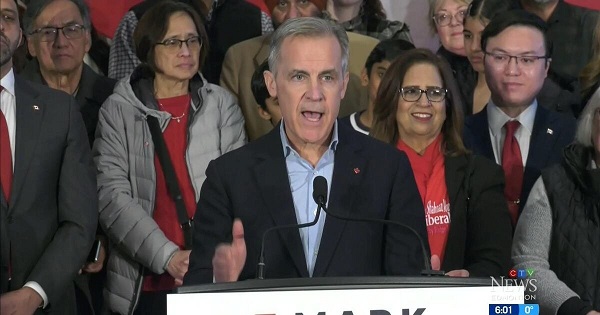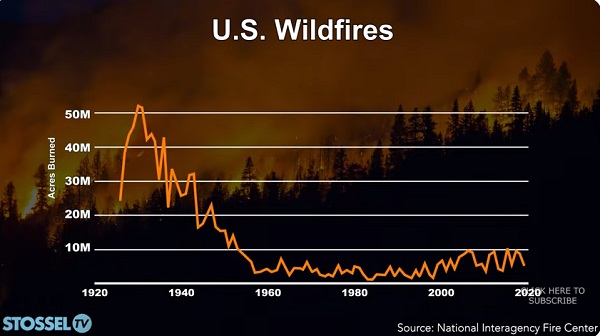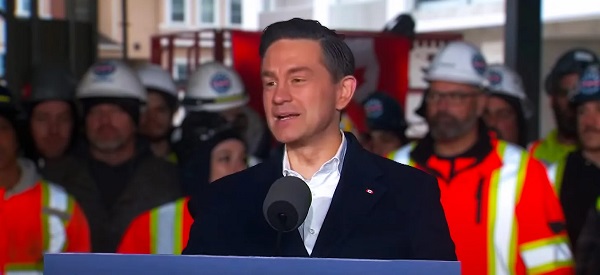Alberta
Government introduces new auto industry rules to protect consumers

New auto industry rules better protect consumers
October 25, 2018 Media inquiries
New rules for vehicle sales and repairs introduce industry-wide standards to protect Albertans and improve business accountability.
Minister Malkinson, centre, with AMVIC board chair Bill Burnett, right, and business owner Ted Zylstra discussing new consumer protection rules.
Improvements to the Automotive Business Regulation will create consistent standards to help consumers make more informed decisions and ensure businesses can compete fairly in a trusted automotive marketplace. The new, industry-wide standards come into effect on Oct. 31, 2018.
“Buying or repairing a car shouldn’t be intimidating. These new rules can give Albertans confidence that they won’t be hit with unexpected costs because they will know exactly what they’re paying for. More transparency is good for consumers and it’s good for Alberta’s many trustworthy auto businesses, too.”
During the 2017 consultation on consumer protection laws, Albertans identified the need for better protections when buying a car and more transparency when it comes to auto repairs as top priorities.
These changes respond directly to Albertans’ feedback to help consumers avoid unexpected and unauthorized costs. The new rules will ensure auto businesses:
- Inform buyers of the history and condition of a vehicle such as the vehicle’s previous use, ownership or details of any damages.
- Provide a comprehensive bill of sale document at the time of the car sale.
- Provide written estimates upon request and get consumer’s consent before starting any work.
- Remove any outstanding liens on a vehicle within seven days of the sale.
- Remove any advertising about a sold vehicle within 14 days of the sale to ensure consumers are not enticed by low prices that won’t be honoured.
“A vehicle is a lifeline for so many Albertans, and they deserve to feel confident when repairing or selling one. We welcome today’s announcement, as it prioritizes consumer protection – a mandate that’s been shared by AMA’s Approved Auto Repair Service since 1977.”
“Increased transparency in automotive transactions means consumers can feel even more confident in their decisions on how to spend their hard-earned money. AMVIC’s mandate is consumer protection through education and industry regulation, and AMVIC has been working closely with industry to ensure they are ready to comply with the new legislation. These new laws benefit all Albertans by creating a fair marketplace for consumers and businesses alike.”
“I think the government’s new legislation is great. It will help protect the consumer while also compelling automotive businesses to be more transparent. At Braeside Automotive, we already provide written quotes and can take pictures of components that we can attach to the quote for our customer. I think these rules will help encourage other businesses to be more innovative, which at the end of the day is good for consumers.”
The new rules also support the government’s work to build stronger public oversight of the Alberta Motor Vehicle Industry Council (AMVIC), by transitioning AMVIC to a public agency. This will ensure Alberta has a strong and trusted regulator that is well-positioned to protect consumers and build integrity in the industry.
Background
- In December 2017, the government passed A Better Deal for Consumers and Businesses Act. Among the many changes introduced through this act was an increased authority to strengthen oversight of the automotive industry to better protect the interests of consumers and ensure integrity in the industry.
- AMVIC is responsible for providing consumer protection in the motor vehicle industry. In addition to licensing businesses and salespeople and ensuring there’s a fair marketplace for consumers and businesses, AMVIC is responsible for investigating violations of consumer protection laws.
- AMVIC will transition to a public agency on Oct. 31. Once in place, AMVIC will be subject to the requirements under the Alberta Public Agencies Governance Act to ensure consumers and industry can have confidence there is strong public oversight of the organization.
Alberta
Low oil prices could have big consequences for Alberta’s finances

From the Fraser Institute
By Tegan Hill
Amid the tariff war, the price of West Texas Intermediate oil—a common benchmark—recently dropped below US$60 per barrel. Given every $1 drop in oil prices is an estimated $750 million hit to provincial revenues, if oil prices remain low for long, there could be big implications for Alberta’s budget.
The Smith government already projects a $5.2 billion budget deficit in 2025/26 with continued deficits over the following two years. This year’s deficit is based on oil prices averaging US$68.00 per barrel. While the budget does include a $4 billion “contingency” for unforeseen events, given the economic and fiscal impact of Trump’s tariffs, it could quickly be eaten up.
Budget deficits come with costs for Albertans, who will already pay a projected $600 each in provincial government debt interest in 2025/26. That’s money that could have gone towards health care and education, or even tax relief.
Unfortunately, this is all part of the resource revenue rollercoaster that’s are all too familiar to Albertans.
Resource revenue (including oil and gas royalties) is inherently volatile. In the last 10 years alone, it has been as high as $25.2 billion in 2022/23 and as low as $2.8 billion in 2015/16. The provincial government typically enjoys budget surpluses—and increases government spending—when oil prices and resource revenue is relatively high, but is thrown into deficits when resource revenues inevitably fall.
Fortunately, the Smith government can mitigate this volatility.
The key is limiting the level of resource revenue included in the budget to a set stable amount. Any resource revenue above that stable amount is automatically saved in a rainy-day fund to be withdrawn to maintain that stable amount in the budget during years of relatively low resource revenue. The logic is simple: save during the good times so you can weather the storm during bad times.
Indeed, if the Smith government had created a rainy-day account in 2023, for example, it could have already built up a sizeable fund to help stabilize the budget when resource revenue declines. While the Smith government has deposited some money in the Heritage Fund in recent years, it has not created a dedicated rainy-day account or introduced a similar mechanism to help stabilize provincial finances.
Limiting the amount of resource revenue in the budget, particularly during times of relatively high resource revenue, also tempers demand for higher spending, which is only fiscally sustainable with permanently high resource revenues. In other words, if the government creates a rainy-day account, spending would become more closely align with stable ongoing levels of revenue.
And it’s not too late. To end the boom-bust cycle and finally help stabilize provincial finances, the Smith government should create a rainy-day account.
Alberta
Governments in Alberta should spur homebuilding amid population explosion

From the Fraser Institute
By Tegan Hill and Austin Thompson
In 2024, construction started on 47,827 housing units—the most since 48,336 units in 2007 when population growth was less than half of what it was in 2024.
Alberta has long been viewed as an oasis in Canada’s overheated housing market—a refuge for Canadians priced out of high-cost centres such as Vancouver and Toronto. But the oasis is starting to dry up. House prices and rents in the province have spiked by about one-third since the start of the pandemic. According to a recent Maru poll, more than 70 per cent of Calgarians and Edmontonians doubt they will ever be able to afford a home in their city. Which raises the question: how much longer can this go on?
Alberta’s housing affordability problem reflects a simple reality—not enough homes have been built to accommodate the province’s growing population. The result? More Albertans competing for the same homes and rental units, pushing prices higher.
Population growth has always been volatile in Alberta, but the recent surge, fuelled by record levels of immigration, is unprecedented. Alberta has set new population growth records every year since 2022, culminating in the largest-ever increase of 186,704 new residents in 2024—nearly 70 per cent more than the largest pre-pandemic increase in 2013.
Homebuilding has increased, but not enough to keep pace with the rise in population. In 2024, construction started on 47,827 housing units—the most since 48,336 units in 2007 when population growth was less than half of what it was in 2024.
Moreover, from 1972 to 2019, Alberta added 2.1 new residents (on average) for every housing unit started compared to 3.9 new residents for every housing unit started in 2024. Put differently, today nearly twice as many new residents are potentially competing for each new home compared to historical norms.
While Alberta attracts more Canadians from other provinces than any other province, federal immigration and residency policies drive Alberta’s population growth. So while the provincial government has little control over its population growth, provincial and municipal governments can affect the pace of homebuilding.
For example, recent provincial amendments to the city charters in Calgary and Edmonton have helped standardize building codes, which should minimize cost and complexity for builders who operate across different jurisdictions. Municipal zoning reforms in Calgary, Edmonton and Red Deer have made it easier to build higher-density housing, and Lethbridge and Medicine Hat may soon follow suit. These changes should make it easier and faster to build homes, helping Alberta maintain some of the least restrictive building rules and quickest approval timelines in Canada.
There is, however, room for improvement. Policymakers at both the provincial and municipal level should streamline rules for building, reduce regulatory uncertainty and development costs, and shorten timelines for permit approvals. Calgary, for instance, imposes fees on developers to fund a wide array of public infrastructure—including roads, sewers, libraries, even buses—while Edmonton currently only imposes fees to fund the construction of new firehalls.
It’s difficult to say how long Alberta’s housing affordability woes will endure, but the situation is unlikely to improve unless homebuilding increases, spurred by government policies that facilitate more development.
-

 2025 Federal Election2 days ago
2025 Federal Election2 days agoThe Federal Brief That Should Sink Carney
-

 2025 Federal Election2 days ago
2025 Federal Election2 days agoHow Canada’s Mainstream Media Lost the Public Trust
-

 2025 Federal Election2 days ago
2025 Federal Election2 days agoOttawa Confirms China interfering with 2025 federal election: Beijing Seeks to Block Joe Tay’s Election
-

 Media20 hours ago
Media20 hours agoCBC retracts false claims about residential schools after accusing Rebel News of ‘misinformation’
-

 COVID-192 days ago
COVID-192 days agoNearly Half of “COVID-19 Deaths” Were Not Due to COVID-19 – Scientific Reports Journal
-

 John Stossel2 days ago
John Stossel2 days agoClimate Change Myths Part 2: Wildfires, Drought, Rising Sea Level, and Coral Reefs
-

 2025 Federal Election2 days ago
2025 Federal Election2 days agoReal Homes vs. Modular Shoeboxes: The Housing Battle Between Poilievre and Carney
-

 Bjorn Lomborg19 hours ago
Bjorn Lomborg19 hours agoNet zero’s cost-benefit ratio is CRAZY high




